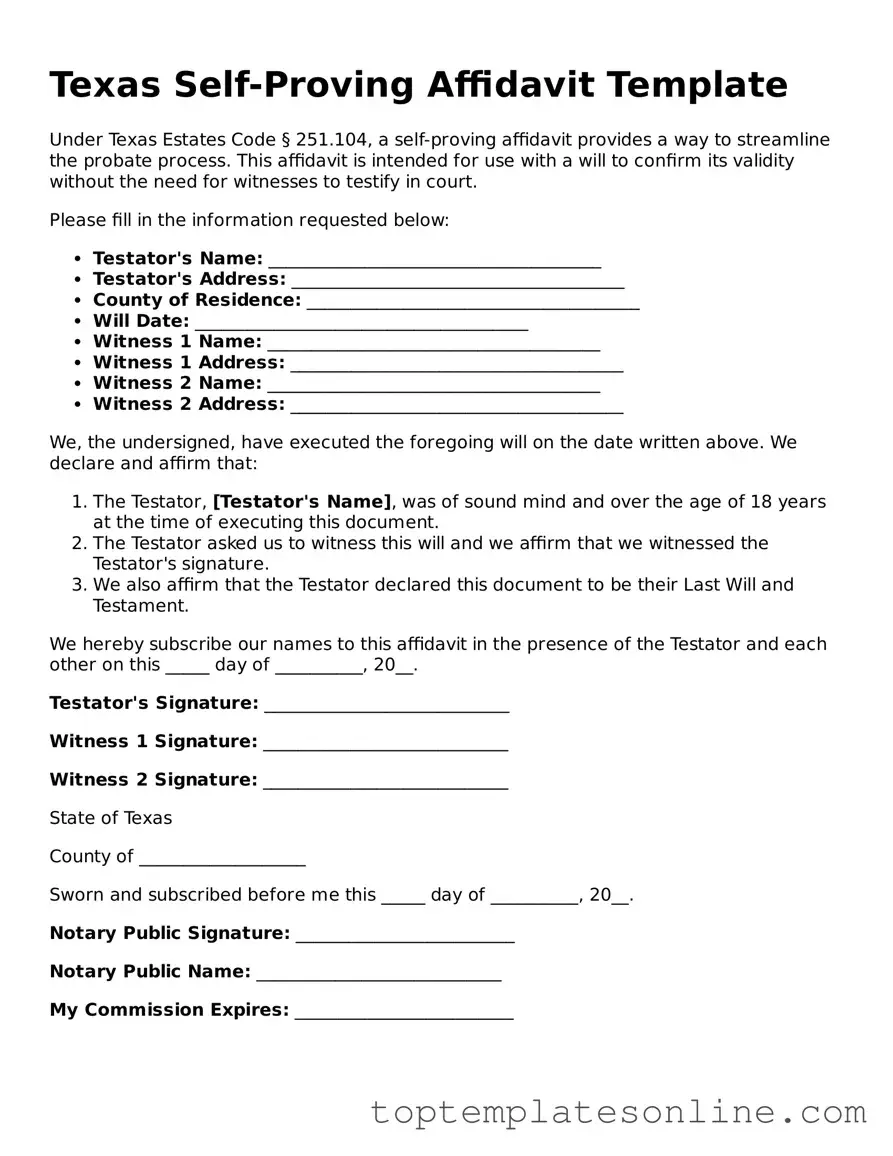Blank Self-Proving Affidavit Template for Texas State
The Texas Self-Proving Affidavit is a legal document that allows a testator's will to be validated without the need for witnesses to testify in court. This form simplifies the probate process, ensuring that the testator's intentions are honored efficiently. By incorporating this affidavit, individuals can streamline the legal proceedings surrounding their estate after passing.
Customize Self-Proving Affidavit Here
